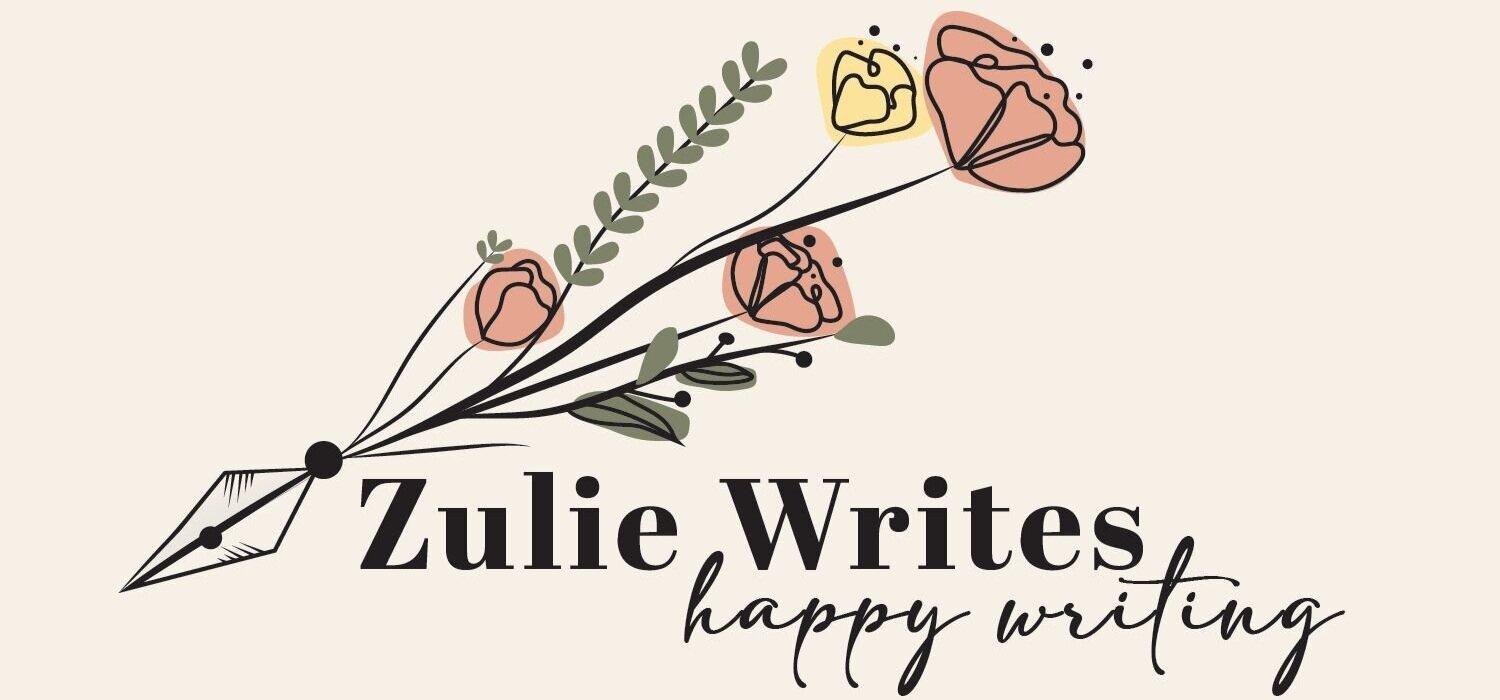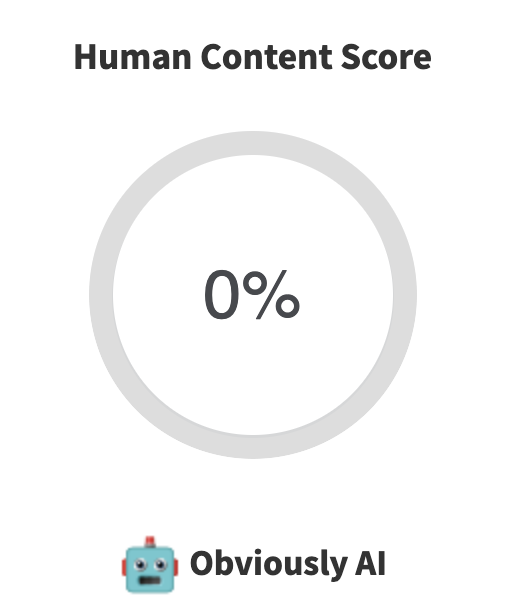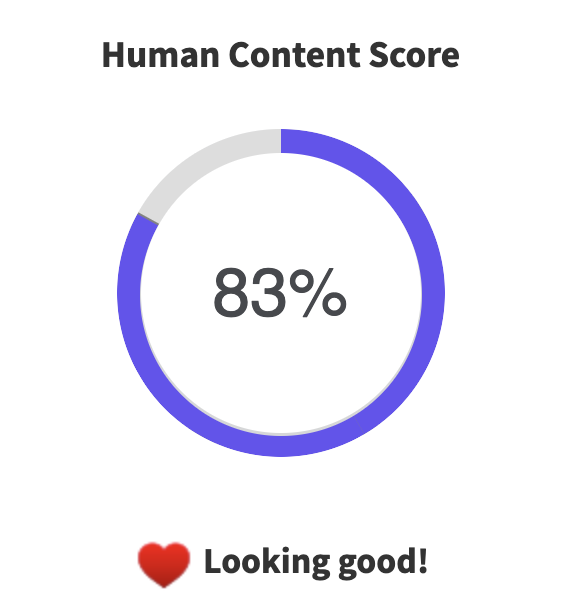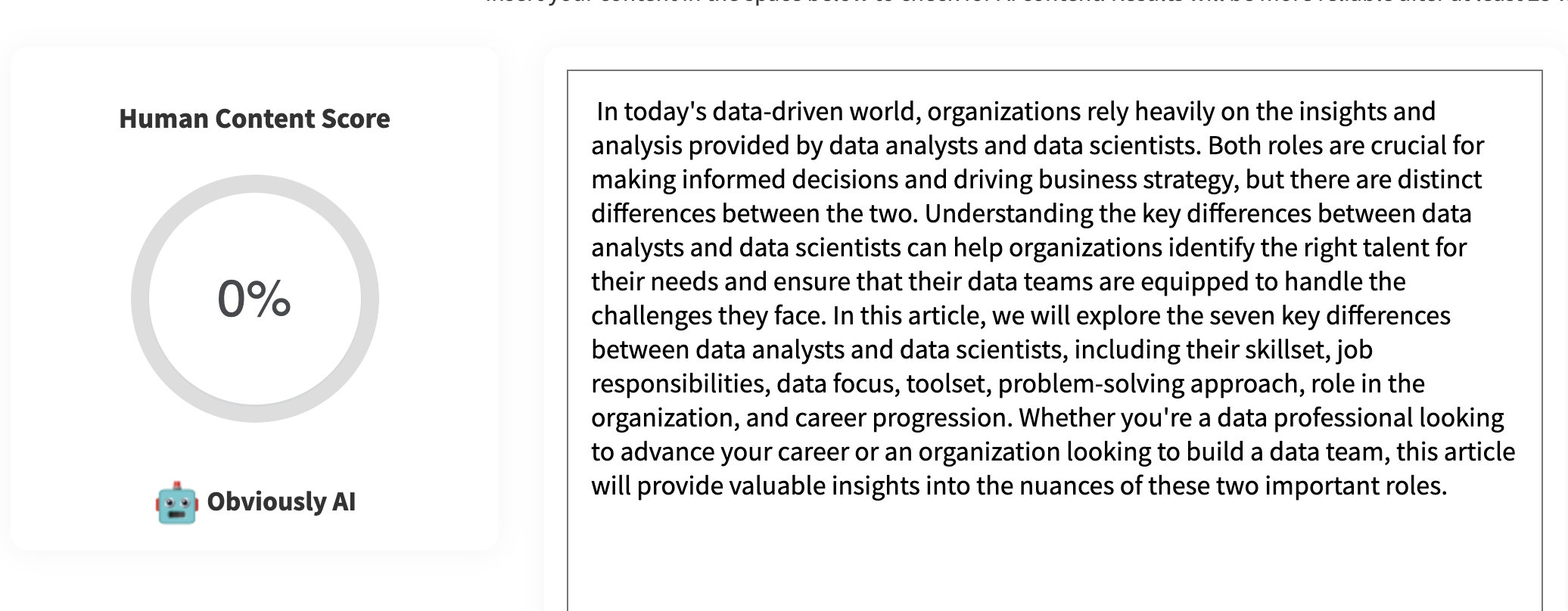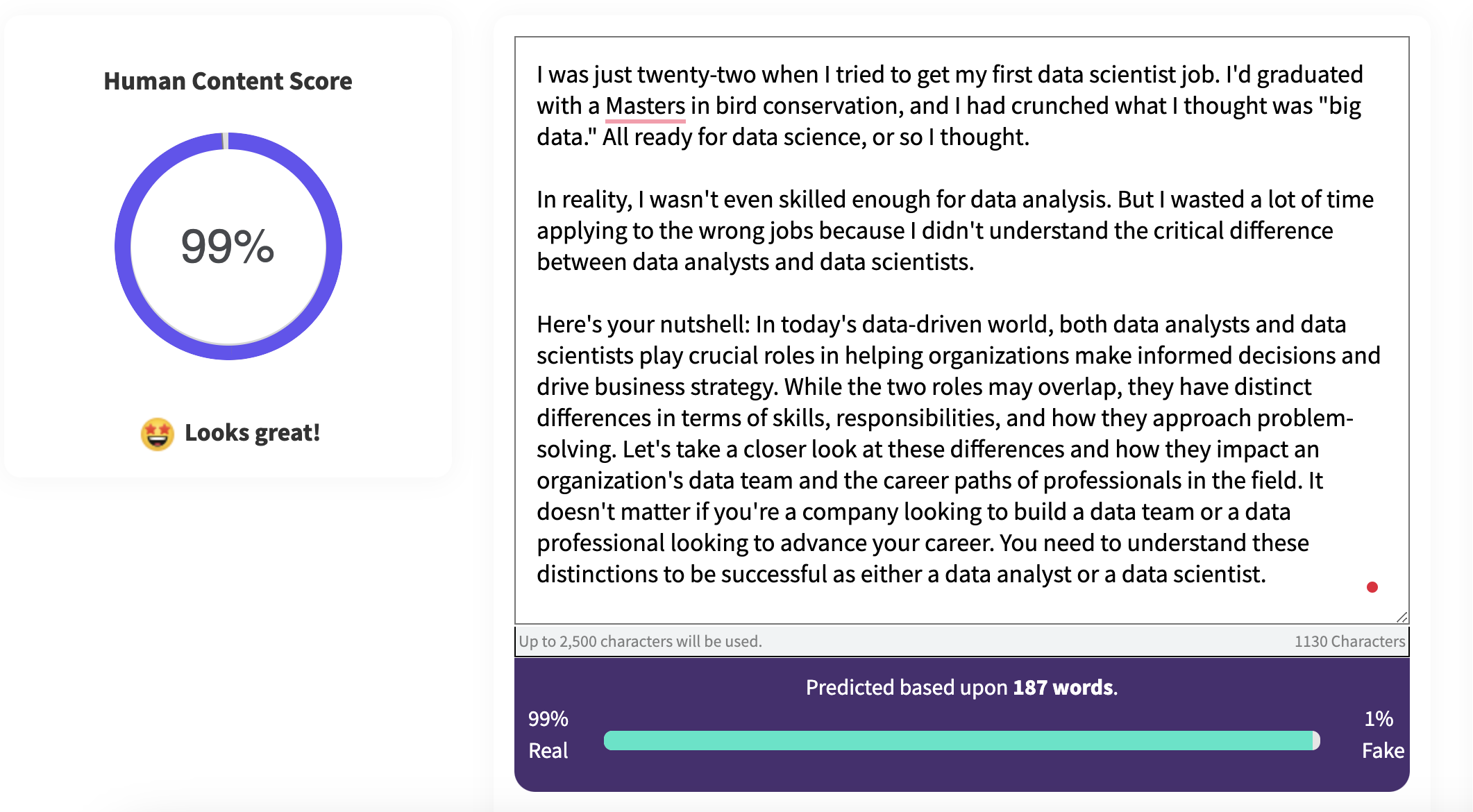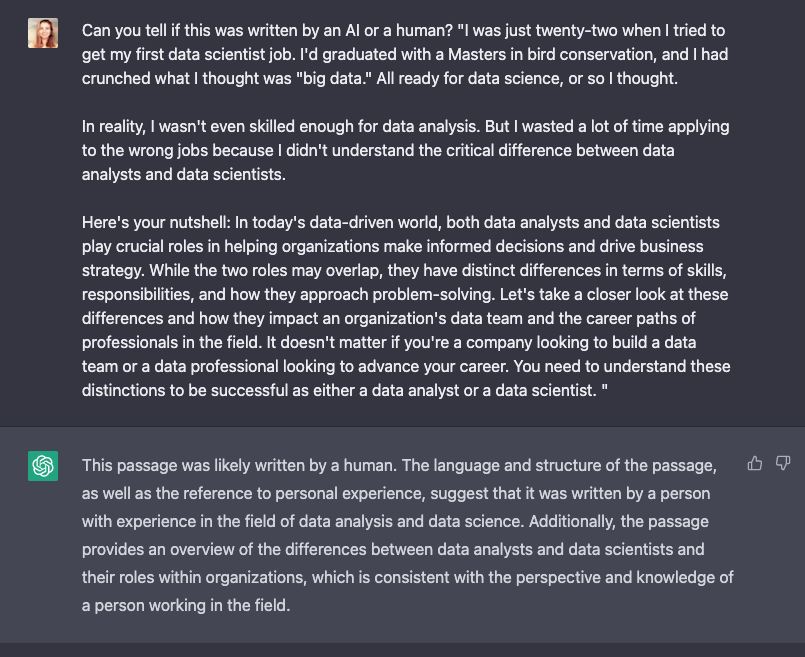3 Foolproof Methods to Trick AI Content Detectors
AI content today is here to stay. I say it begrudgingly, I resented it, I ignored it for a long time, but it’s here and it’s open source and it’s not going anywhere.
I’m leaning in. In this article, I’m going to teach you three ways to trick AI content detectors in a smart way and still feel proud of the work you’re doing.
As a writer, the best thing you can do is get on board with learning how to use it. Not later, not when everyone but you is using it. Now.
One thing that is going to be increasingly important is to make sure that you're not getting caught in AI content detectors.
Google made waves recently by announcing it was going to be catching AI-generated content and penalizing it in the search results, which is good. This is good for writers because it means you aren’t going to be competing with the unholy offspring of SEO word salad produced at scale with AI.
But it also means you need to be careful when you use AI as a research tool to avoid being unfairly caught in the AI content detection web. That’s why it’s good to know how to escape or trick AI content detectors.
It’s not just Google, either. No platform - Medium, Instagram, Pinterest - wants to be full of low-quality AI content. So if you're using AI to generate articles, blog posts, and social media posts, I think it's very likely that social media platforms and platforms like Google are going to form a tighter and tighter net to catch you out and penalize you for using AI content.
Does this mean you shouldn't use AI content? No. It just means you have to be smarter about how to use it.
Let’s get into the three ways to trick AI content detectors while not only producing robot content.
Why are you learning how to trick AI content detectors?
The purpose of this article is to make sure that you don't get caught unfairly in the crossfire of AI content detectors penalizing your content because you relied on AI to help you write it. If you only used AI to generate a blog post, I honestly think you deserve to get caught. If that's you, this article is not for you.
This article on how to trick AI content detectors is for people like me, who want to use AI as a tool, not as a cheat.
What tools can you use to beat AI content detectors?
Let's set the stage a little bit. What tools will you need to get started?
I've been playing around with a tool called ChatGPT. Unlike my honest review of the best AI content generation tools, frankly, I've been pretty impressed with how easy it is to use and how good it is to use. So I'm going to be using ChatGPT to show you how I would be using it to write an article.
ChatGPT introduces itself.
As far as content detection, I'm going to use a tool called Content at Scale AI Content Detector [tk link]. I think it's pretty great. What I like about it is it gives you a little percentage that says, “This is 70 likely to be written by a human,” or, “No, this was definitely written by a robot.”
Use AI to generate an outline
Here’s how I would use AI to start writing a blog post. I'd asked it to outline a number of key differences between data scientists and data analysts.
I picked this topic because it’s very competitive on Google. Many people have already written articles on this, so the AI will have a lot of training material to choose from. But a lot of the content is poor because it was written purely to rank for SEO, not for reader enjoyment or comprehension. With some work and some luck, we're going to do a little bit better than that.
Here are the seven key differences ChatGPt generated:
A pretty comprehensive of seven differences between data analysts and data scientists.
After I asked ChatGPT to generate seven key differences, I got it to generate the introduction to the article outline. This is what we're going to be testing.
ChatGPT-generated intro to the seven points it outlined above.
Look at this content. It’s not bad, and it’s not inaccurate, but it’s boring. It’s obviously robotically generated. It has nothing new to contribute to the conversation. No unique insights. It’s unoriginal.
Let's test it out as a control using Content at Scale’s AI content detection tool:
Not great!
This got a human content score of zero percent. Obviously AI. I thought that was pretty funny because yes, this is AI.
So our control proves that ChatGPT’s native work, unaltered, is definitely robotic.
Now let’s move on to the three ways to trick AI content detectors.
1. Intentional misspellings or bad grammar choices.
You know what robots are really good at? Avoiding human errors. To slip through the net of AI content detectors, it really can be as easy as throwing in some misspellings.
You can:
Add in random spaces
Stick commas in bad places
Intentionally misspell words.
Let’s try all three and see what we get:
Yikes! The exact same paragraph + bad writing = 100% human.
There you go. With just a couple commas, spaces, and creative spelling choices, we have successfully tricked this AI content detector.
But I don’t recommend this method for two reasons. First, while this may work now, it’s going to be very easy to catch. Grammarly can already catch these errors. Soon, all the AI content detectors will account for intentional misspellings and this trick won’t work.
(And, a casual reader can also tell that this is AI-generated content, plus some human errors. Truly the worst of both worlds.)
Second, and more importantly, the whole benefit of using AI is that you can make better content, not worse content. Asking your readers to read bad, incorrect, poorly spelled content is not a great look. Even if AI content detectors never catch onto this method, your readers will quickly get annoyed.
That's the low-hanging fruit. Let’s look at another method.
2. It takes a robot to beat a robot.
You know who both knows a lot about the differences between data scientists and data analysts and who's pretty expert at what's AI writing?
I’ll give you just one guess.
[Dramatic pause]
OK, I'm going to tell you. It's ChatGPT!
Here's something really interesting I discovered. If you go to a new chat on ChatGPT, you can ask it if it thinks the text (that it just wrote) was written by AI. And it can do one better than Content at Scale’s AI content detector: it can tell you exactly how it can tell this is written by a robot, not by a human.
You can actually ask it to tell you what exactly gives it that AI flavor.
I mean, I think most of us intuitively know that there are a couple of hallmarks of AI writing, but it’s useful to have them delineated clearly by ChatGPT.
ChatGPT says it’s probably generated by AI because:
ChatGPT found a few reasons why that paragraph was written by AI.
Now here's the really cool part. You can actually ask ChatGPT to punch this up to make it more like a human wrote and less like an AI wrote it.
And this passes Content at Scale’s AI Content Detector test.
Not bad it says! This rewriting sounds halfway human. One decent way to trick AI content detectors.
To trick the AI content detector, ChatGPT rewrote this to:
Be more conversational, less formal
Use personal language, like “let’s take a closer look”
Include less technical language
So better, but not perfect. If I were you, I would not be satisfied with this as an introduction. This does not make me happy. Why? Because this is missing one really critical thing that will make you 100 guaranteed to trick all AI content detectors forever:
An element of human writing!
3. (Good) human writing
This is the key. If you want to forever be able to trick AI content detectors, no matter how smart they get, no matter how sophisticated they get, you're going to need to actually write stuff yourself.
Let’s see what happens when I include a few real, human-written phrases in this paragraph:
It passes both tests. Both Content at Scale’s AI detector and ChatGPT believe this was written by a human, which it mostly was.
There’s your conclusion. The best way to trick AI content detectors is to use them as a tool, and write the text yourself. Some content detectors may be fooled by extra spaces and weird commas; they may be fooled by ChatGPT’s rewriting of these, you can tell that it was written by a robot, not a human.
You might not yet be subject to penalizations on your content, on your blog, or on your website, but the day will come when those algorithms catch up to you. And honestly, the day is probably already here that your readers have caught up to you. They're just not appreciating your garbage content.
How to trick AI content detectors: don’t.
If you're reading this article looking for a cheap way to produce garbage SEO content, this isn't it. I create content about how to write good stuff.
Over time, I've come to realize that AI can help you do this. It did generate those seven differences, and it generated a half-decent intro that I could punch up without too much effort. It can also summarize a lot of research that would have otherwise taken me a long time to read.
But it's never going to be able to write the blog for you. This is because it's never going to be able to introduce this kind of anecdote. It's never going to be able to include personal lived experience, because ultimately, it is a robot.
To summarize, there are three ways to trick AI content detectors.
Put weird spaces, spelling mistakes, commas, grammar errors, etc. That will fool stuff today, but it won't fool AI content detectors tomorrow.
Use ChatGPT to rewrite the phrase or paragraph to sound less robotic. This may fool some AI content detectors as we've seen, but it won't fool all of them, and it won't fool your readers.
Write it yourself, or at least write most of it. Include a lot of personal, compelling anecdotes and details from your own lived experience.
Thank you for reading this article on how ot trick AI content detectors! I would love to hear what you think about these strategies. I'm making this article in part because on my last AI video, a commenter challenged me. She was like, “I honestly think you're wrong about AI, you can use it to research stuff.” I listened to her, and she was right.
AI is changing quickly, and AI content detectors will become more of a threat to anyone relying on AI to help generate content. These three methods work to some degree or another, and I recommend the third method as the most reliable.
